
Samsung wasn’t quite ready to declare the Galaxy Note dead. Not just yet. When we put the question to the company again after this month’s Unpacked event, a rep told us:
Samsung is constantly evaluating its product lineup to ensure we meet the needs of consumers, while introducing technology that enhances users’ mobile experiences. We will not be launching new Galaxy Note devices in 2021. Instead, Samsung plans to continue to expand the Note experience and bring many of its popular productivity and creativity features, including the S Pen, across our Galaxy ecosystem with products like the Galaxy S21 Ultra and including to other categories like tablets and laptops. We will share more details on our future portfolio once we’re ready to announce.
It’s not an answer, exactly, so much as a reiteration of its earlier announcement that there will be no new Note for 2021. Asked whether it was simply a matter of chip shortages, Samsung sent us a similarly non-committal response:
The current volatility of the semiconductor market is being felt across the entire technology industry and beyond. At Samsung, we are making our best efforts to mitigate the impact, and will continue to work diligently with our partners to overcome supply challenges.
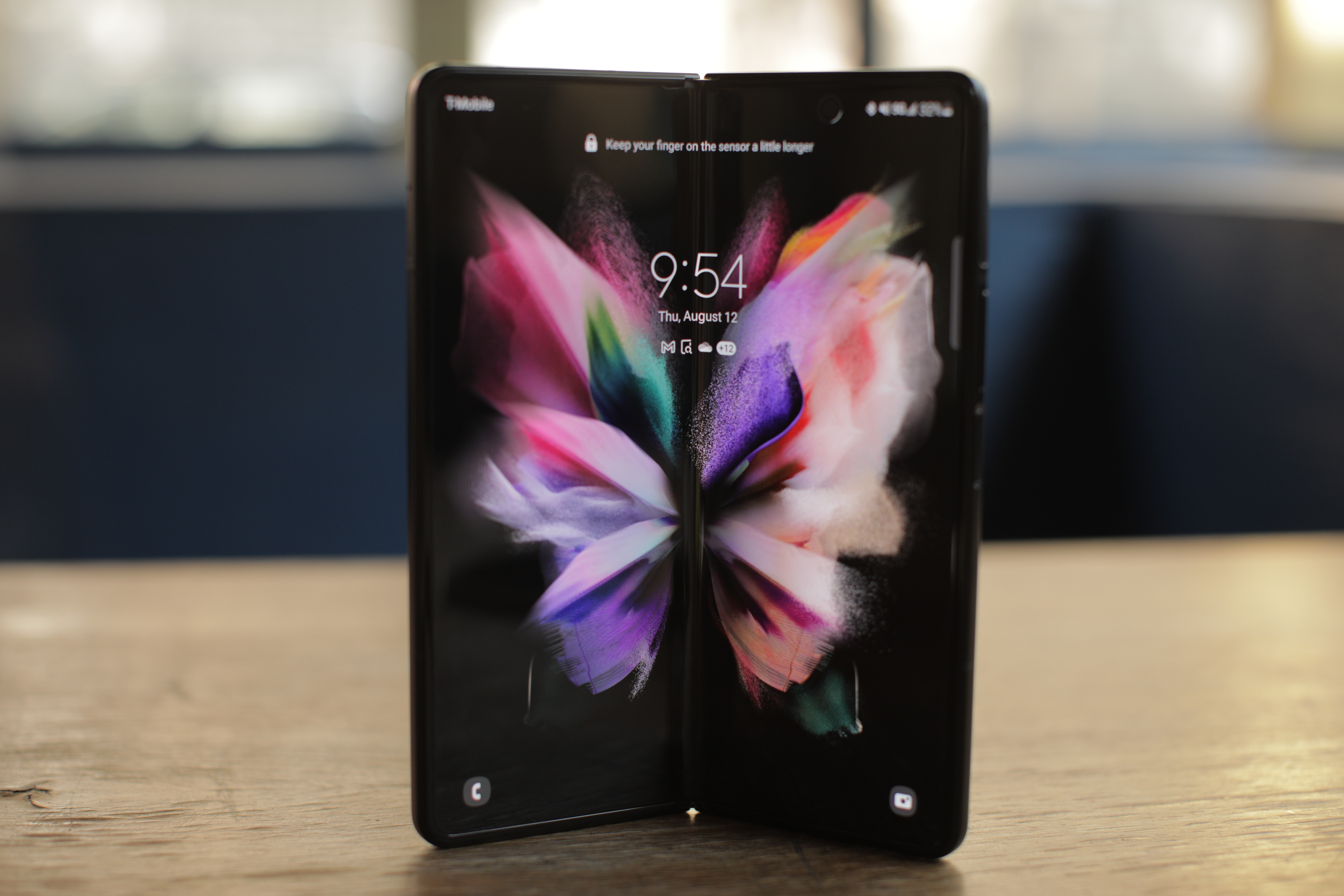
Image Credits: Brian Heater
It’s too early to declare the Galaxy Fold 3 the heir to the Note’s decade-long phablet throne. What is for certain, however, is that new features introduced for the Galaxy S line and the company’s high-end foldable have rendered the device fairly redundant. What seems most likely, meanwhile, is Samsung’s wait and see approach. A good selling Fold 3 is as compelling an argument for the Note’s redundancy as any. But that continues to be a big “if.”
Samsung was smart to position early Folds as exciting experiments. It’s never easy to be among the first to market with a new technology, especially with the sorts of scales Samsung tends to trade in. The original Fold brought with it some major questions, both in terms of reliability and adoption. Without retreading the former too much here (we’ve written plenty about it), let’s just say the company went back to the drawing board a couple of times with that first round.
As for the latter, the company revealed back in 2019 that it sold one million units that first year. It was a surprising — and impressive — figure. Obviously it can’t hold a candle to the sorts of numbers the company puts up with the S and Note Series, but for an unproven $2,000 device a few months after launch, it was certainly a positive sign that — at the very least — early adopters were along for the ride.
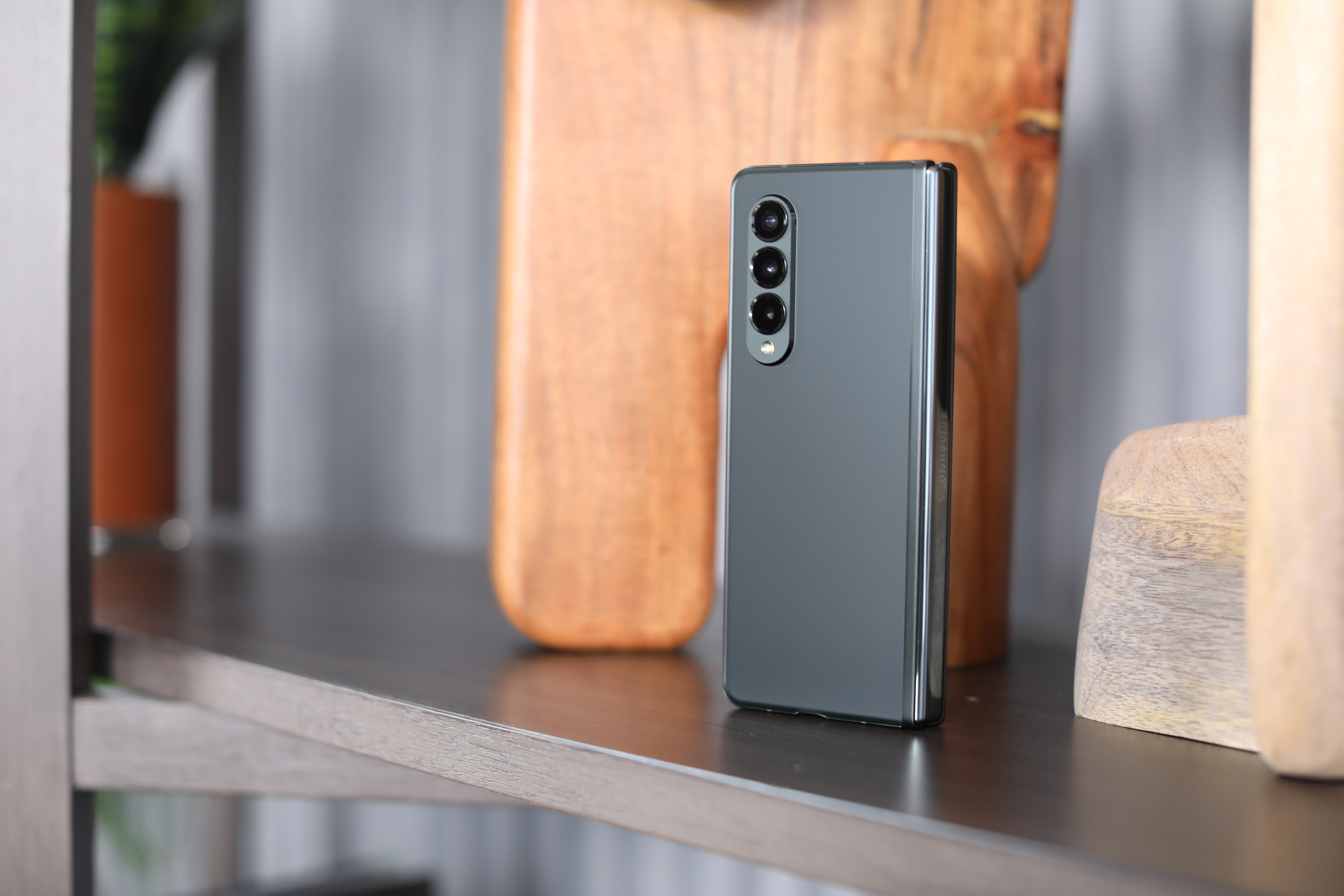
Image Credits: Brian Heater
The Fold 2 found the company more directly addressing some of the biggest issues that arrived with its predecessor, making for a more robust and well-rounded device. The Fold 3 isn’t a radical departure by any stretch, but there are some key updates and refinements on board here. Top-level, here’s what’s new:
- S-Pen support
- IPX8 water resistance
- Slightly larger external display
- Under-display camera
- Strengthened interior screen protector, frame and front glass
So what, precisely, does all of that add up to? For Samsung, the answer is simple: a new flagship. It’s one of those words in the mobile world with a bit of a floating definition. Samsung, after all, previously had two flagships, in the form of the S and Note series. Whether this a tech passing moment for the Note or a declaration of a third flagship for the Galaxy line is dependent on the words written above. What it does signal, however, is Samsung’s stated confidence that this is the moment its high-end foldable goes mainstream.
The first step toward mainstreaming the product is a no brainer. Price. The Fold 3 is still not, by any stretch of the imagination, an affordable device. At $1,800, it’s fittingly still the price of two flagship phones put together. But a $200 drop from its predecessor marks a considerable step in the right direction. One imagines/hopes things will continue to go down as Samsung is able to scale the tech further. Those seeking an “affordable” foldable should be taking a closer look at the new Flip, which actually ducks below the $1,000 price point. More on that in a later review.
There are bound to be issues with any new form factor — even one from a company with Samsung’s know how. I have this visceral memory of walking around gingerly with the original Fold for fear of breaking the thing. There’s a certain expectation of usage during the review process — that you’ll effectively treat the device as you would your own, but the earliest Fold didn’t afford that opportunity, leaving me a bit tense throughout that I might inadvertently damage the $2,000 phone.
And, well, I did. And I certainly wasn’t the first. There were enough issues to warrant reinforcing the device before sending it out into the broader world. It was the right move, to be sure. I don’t think anyone was expecting the Fold would be indestructible, but, again, there’s that expectation of standard usage that the earliest unit didn’t live up to.
The primary fix was two-fold: extending the protective film to the edges after the first looked far too similar to the removable screen protectors Samsung (and other) phones ship with, and second, the company added a brush mechanism to the interior of the hinge mechanism that would still allow some debris in, but would sweep it away through the process of opening the product. That would remove it before it had an opportunity to damage the screen.
The second generation upgraded to a more durable foldable glass. The new version extends those protections further. It is, notably, the first version of the Fold that doesn’t greet you with a laundry list of restrictions the moment you open the box. That’s a good sign. As a rule, I’d say users should probably adhere to a similar “normal usage.” And probably invest in one of those cases. It’s an $1,800 phone, after all.
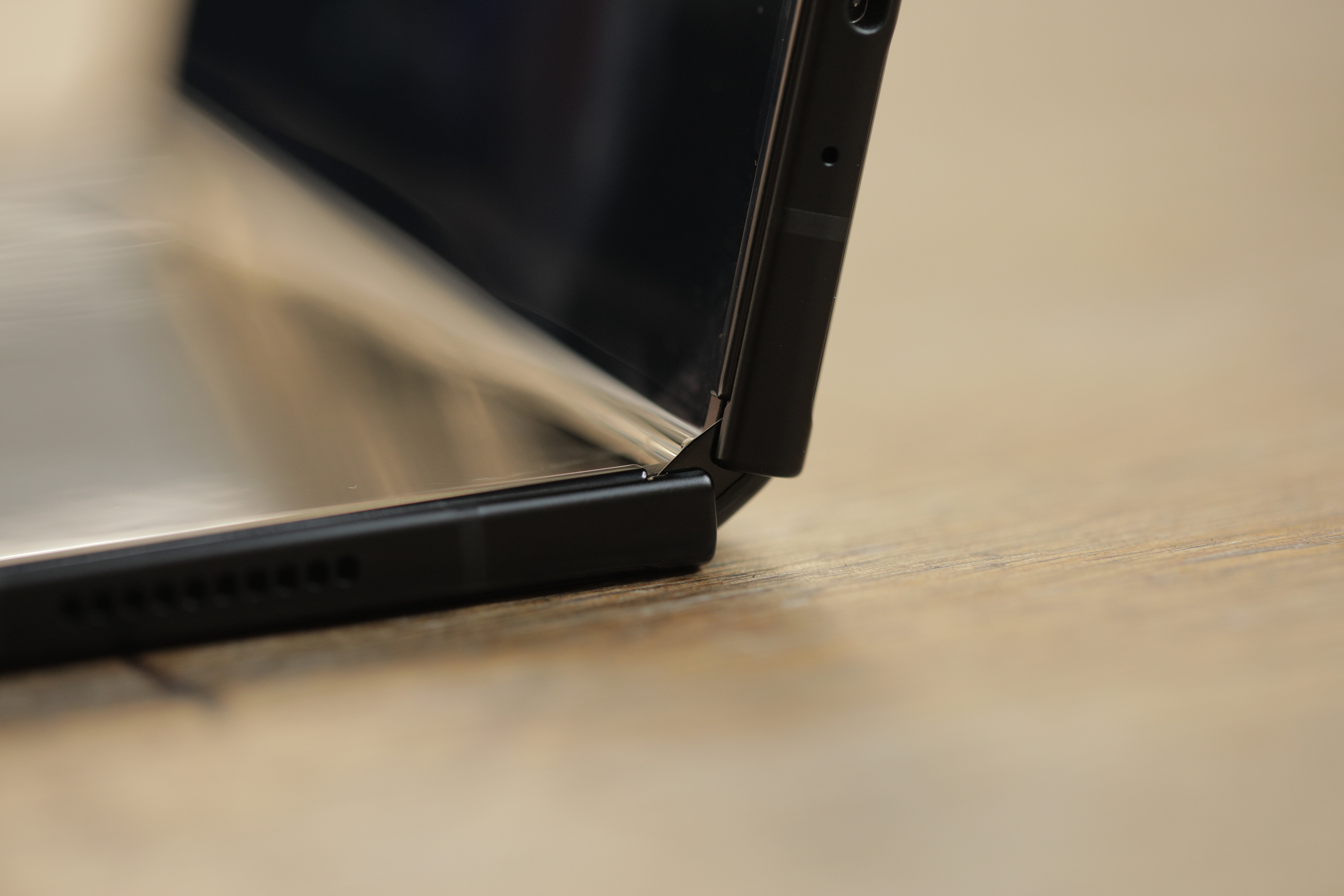
Image Credits: Brian Heater
The most notable addition on the durability front is the IPX8 rating. That’s water resistance for up to 1.5 meters for as long as 30 minutes. The company’s foldables line was a little slow on the uptake in terms of the sort of waterproofing/water resistance that has become nearly standard for premium phones — and understandably so, given the complex mechanisms required. The “X” in the rating, however, indicates that there’s no dustproofing here, for the simple reason that the hinge is actually designed to let particles in (as noted above).
The front and back of the device are now covered with Gorilla Glass Victus — Corning’s latest. Per Corning, “In our lab tests, Gorilla Glass Victus survived drops onto hard, rough surfaces from up to 2 meters. Competitive aluminosilicate glasses, from other manufacturers, typically fail when dropped from 0.8 meters. Additionally, the scratch resistance of Gorilla Glass Victus is up to 4x better than competitive aluminosilicate.” The phone’s body and hinge, meanwhile, are built out of alloy Samsung calls “Armor aluminum, which it claims is “the strongest aluminum used in modern smartphones.”
Perhaps most important of all is the inclusion of a stronger reinforced screen protector that extends further to the sides, making it a lot more difficult and less tempting to try to peel it off. The added protection is necessary both for standard usage (you really don’t want a phone that’s going to get damaged from too much tapping) and opens it up for S Pen functionality. The company now has three lines that utilize its stylus and all of the productivity features contained therein.
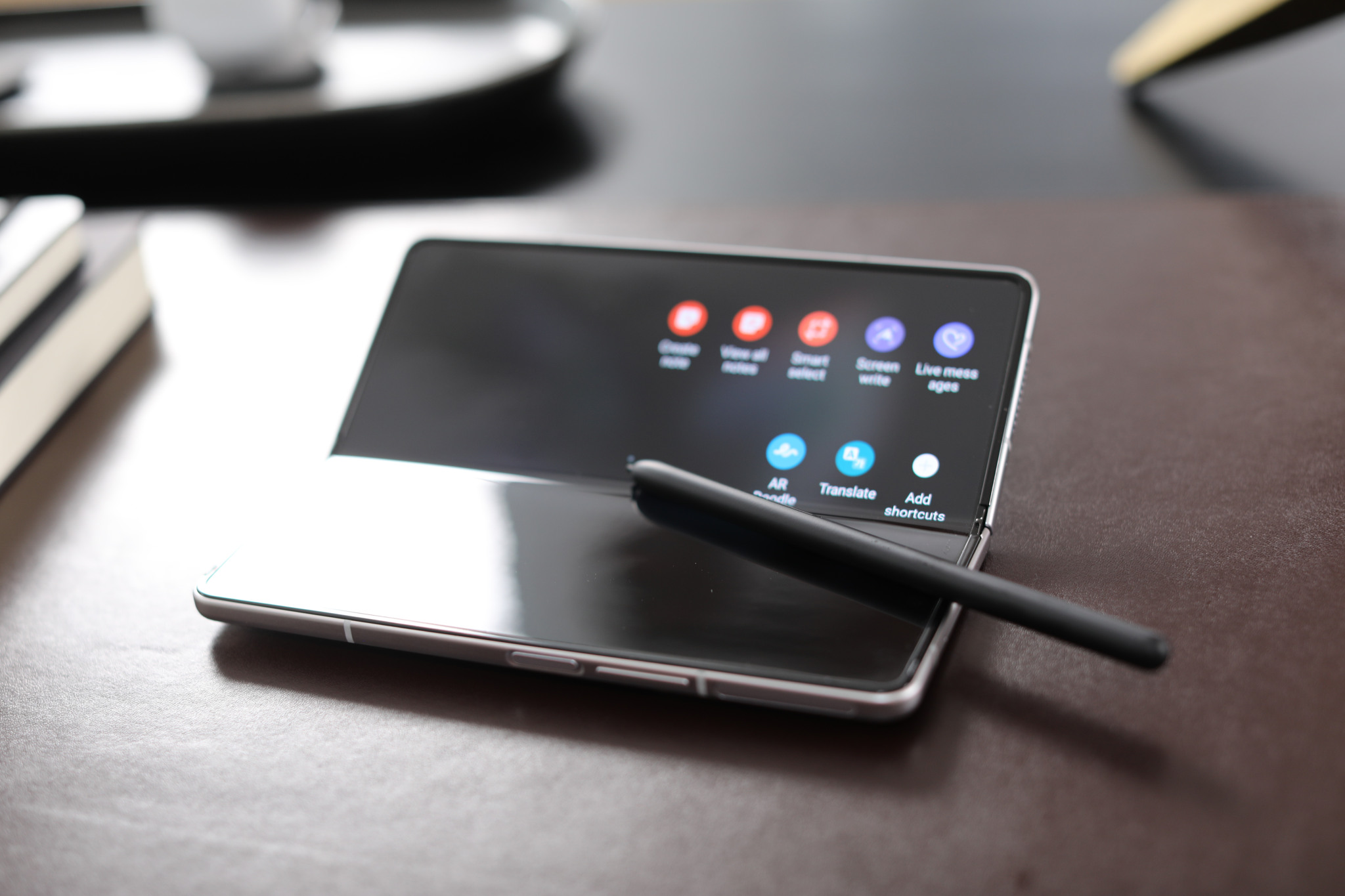
Image Credits: Brian Heater
In addition to the S Pen Pro, the company introduced a Fold-specific model. The $50 stylus is smaller and features a retractable tip, specifically designed to lessen the pressure on the screen. I played around with both styli and didn’t notice a dramatic difference between the two, and while Samsung doesn’t explicitly warn against using the Pro, I’d go for the Fold Edition out of an abundance of caution. (The system also issues a warning if you attempt to use an older version of the S-Pen.)
The company offered TechCrunch the following statement on stylus compatibility:
Only the latest S Pen Fold Edition and S Pen Pro are compatible as they are set to a different frequency than standard S Pens. However, S Pen Pro is compatible with other S Pen-enabled devices—such as Samsung Galaxy tablets, Chromebooks, and smartphones. Users can switch the frequency of the S Pen Pro using the switch at the top.
The 7.6-inch canvas lends itself well to S-Pen functionality. Of course, the Fold — like other foldables — still has a visible crease in the center. That takes some getting used to, compared to the Note. But if you’re a stylus devotee, the functionality fits in well with a growing suite of productivity tools like multiple active windows and app split view. Samsung has compiled quite a productivity workhouse here.
Of course, unlike the Note (and like the S line), the Fold doesn’t feature a built-in slot for the S Pen. It seems likely there may have been some structural integrity issues barring its inclusion — or, at the very least, it probably would have added even more thickness to what is already a fairly thin device when folded up. Samsung does offer up an S Pen case for those serious about taking their stylus with them — and are otherwise worried about losing it.
The primary display hasn’t changed much since last year. It’s still 7.6 inches with a 120Hz refresh rate and a 2208 x 1768 resolution, with support for HDR10+. The 6.2-inch front screen doesn’t have the high dynamic range format, though it has been bumped up to 120Hz from 60Hz. The Fold 2 upgraded the exterior screen size last year, and it makes a big difference. There are plenty of times you just don’t want to deal with unfolding the thing. The aspect ratio is still much to skinny to rely on it most of the time, but App Continuity is a nice feature that lets you seamlessly jump between screens on enabled apps.
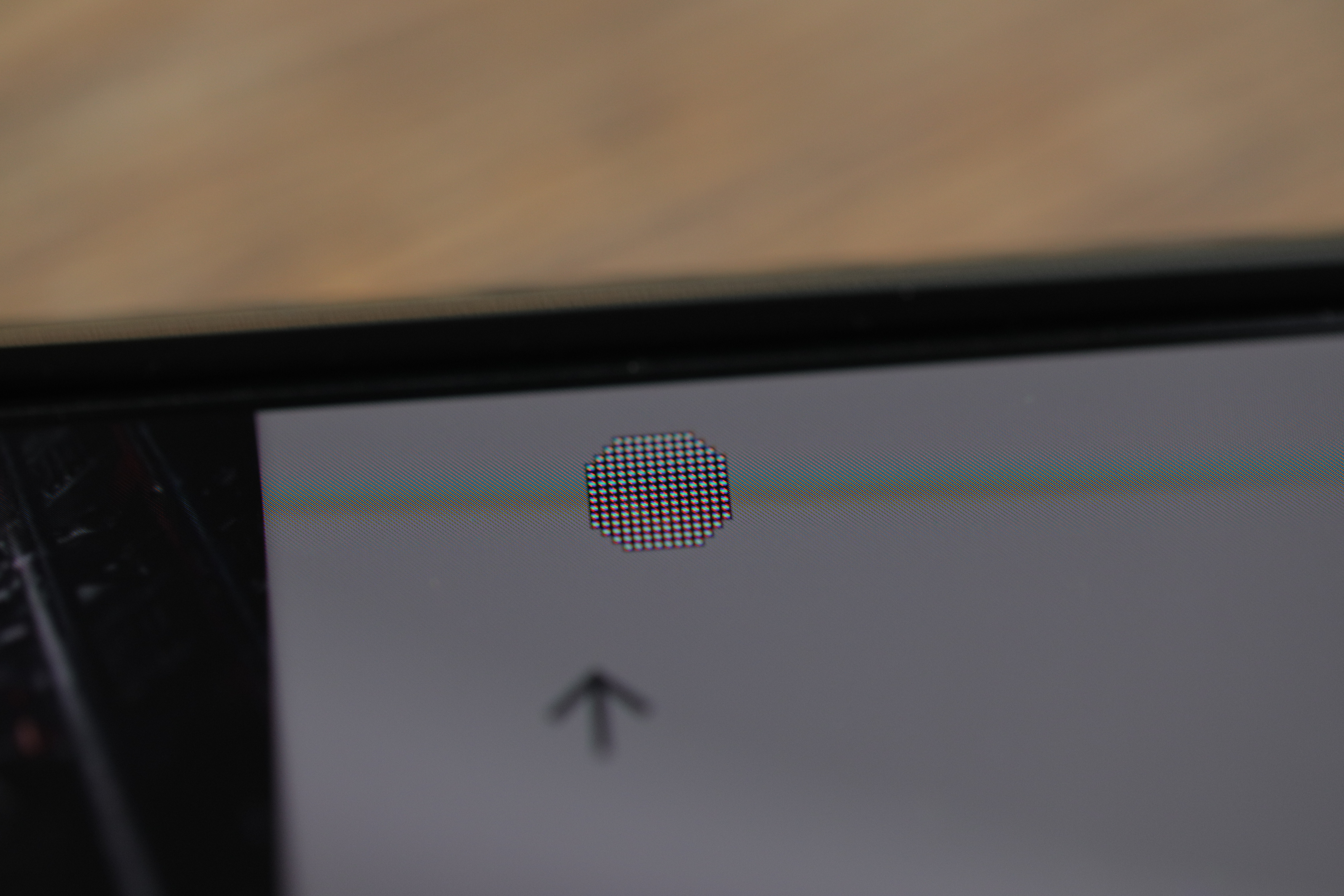
Image Credits: Brian Heater
The biggest addition on the screen front is more of a subtraction, really. The pinhole camera is gone from the main screen. In its place is an under-display camera — the first on a Samsung device. The technology has been a longstanding holy grail for companies. Samsung’s not the first to offer the feature — companies like Oppo and ZTE have sported the feature for a little while now. The Fold uses similar technology, applying a thin layer of pixels above the hole punch. The spot is still visible, particularly when there’s a white image on the screen, but at first blush, it does offer something more contiguous.

Image Credits: Brian Heater
If you follow the space at all, you know that the image performance of these cameras have been less than ideal thus far. And Samsung suffers the same fate. The above shots were taken on the front 10-megapixel and under-display four-megapixels cameras respectively. There’s a haze or blur on the under-screen camera — really not up to the standards we expect from a premium smartphone in 2021.
In an earlier conversation with Samsung, the company was pretty candid about this — and the reason the Fold is the first of its phones to sport the tech. It’s here because you’ve got the additional option of the front-facing camera for selfies, so you’re not reliant on a, frankly, subpar camera. Certainly I wouldn’t rely on it for shooting photos — which is already admittedly awkward with the large form factor. I suppose it can work for teleconferencing in a pinch, but even then, you’re probably better off with the front one. File it as something Samsung can improve on in future updates, as the underlying tech improves.
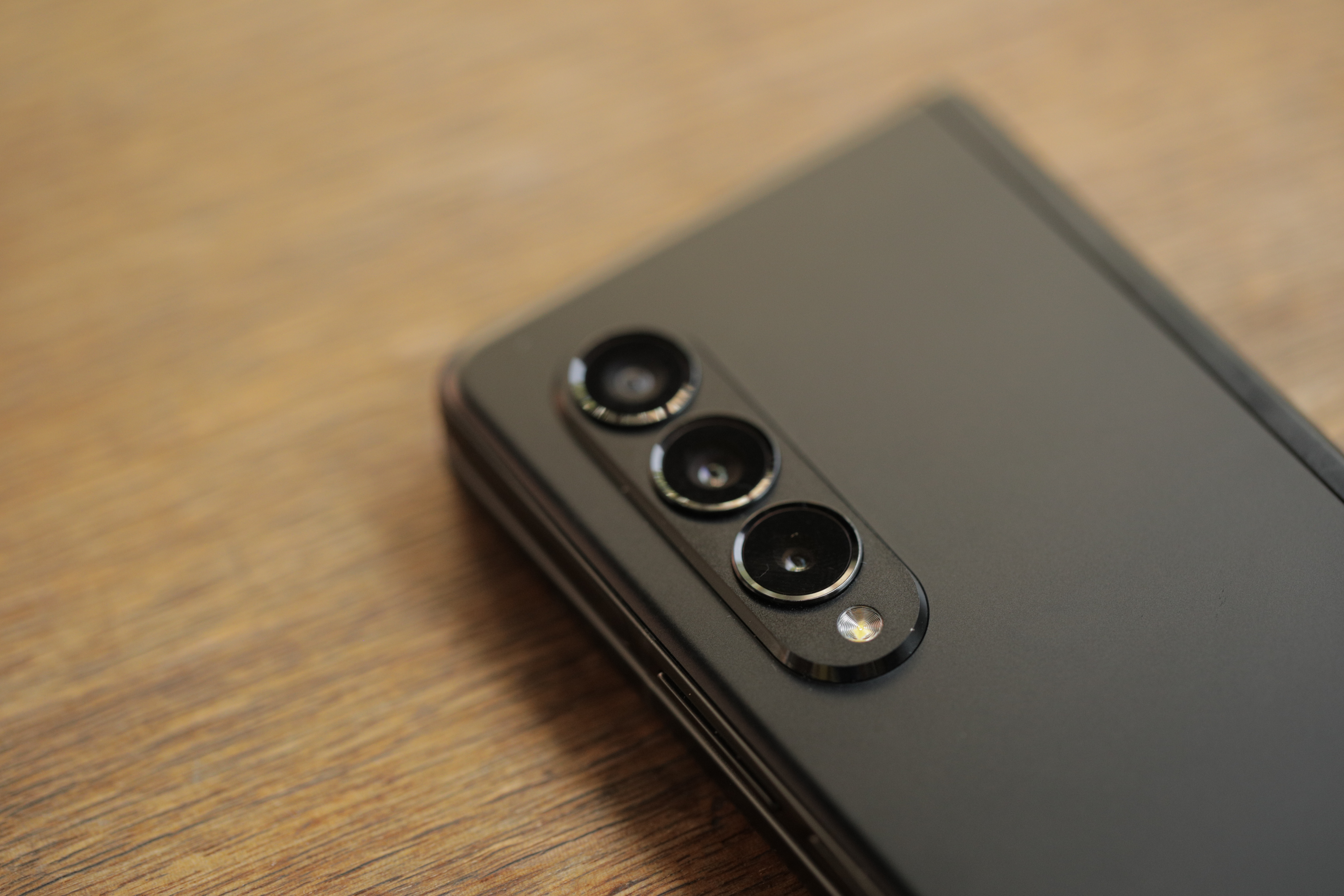
Image Credits: Brian Heater
The main camera system, meanwhile, is largely unchanged since the last version at:
- 12MP Ultra Wide. F2.2, Pixel size: 1.12μm, FOV: 123-degree
- 12MP Wide-angle. Dual Pixel AF, OIS, F1.8, Pixel size: 1.8μm, FOV: 83-degree
- 12MP Telephoto. PDAF, F2.4, OIS, Pixel size: 1.0μm, FOV: 45-degree
It’s a great camera setup that shoots excellent photos, with the added bonus of being able to switch between a 7.6 and 6.2 inch viewfinder (honestly, again, the full screen is kind of awkward for shooting in most scenarios, so I largely stuck with the smaller one).
The battery meanwhile, takes a small hit, down from 4,500mAh to 4,400mAh, split between two modules behind the display halves. It’s a step in the wrong direction, if only a small one. A big device like this tends to be power hungry. Depending on your usage, you should be able to get through a day. That’s not going to be huge problem so long as many of us are still largely stuck at home, but probably not something you’re going to sit around and binge videos on all day without plugging it in.
Naturally, the Fold sports the latest Snapdragon — the 888. That’s coupled with 12GB of RAM and 256GB of storage on the model Samsung sent us. Doubling the storage will bring the price tag up to $1,900.
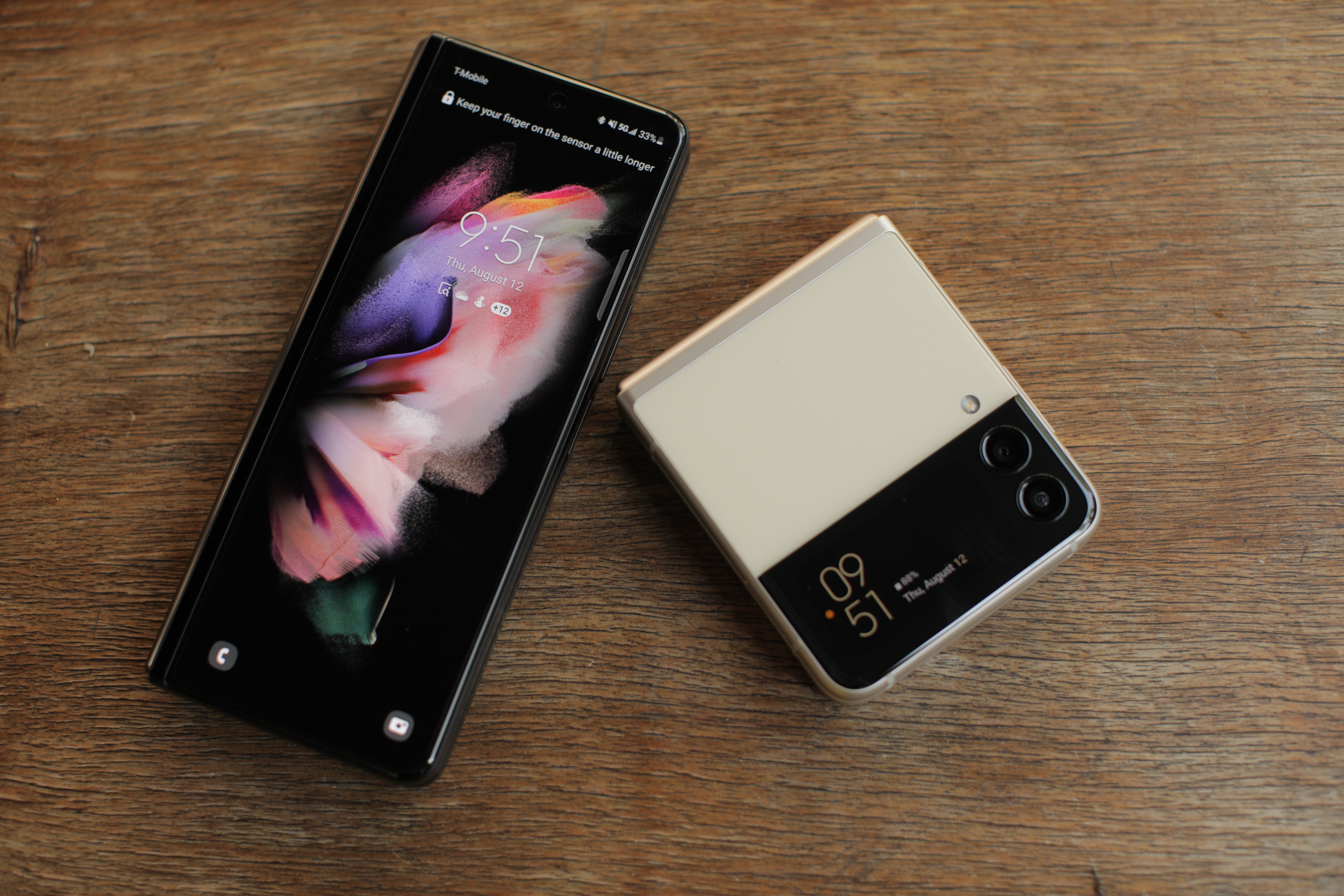
Image Credits: Brian Heater
It’s been impressive to watch Samsung take the Fold from troubled early adopter tech to something far more stable in the course of two generations. But while the company is ready to toss around words like mainstream in the context of its foldables, it’s hard to shake the feeling that such goals are still a long ways away.
The price is heading in the right direction, but the product is still prohibitively expensive for most. I certainly can’t answer the question of why you need such a product, though the advantages of a larger screen make themselves known pretty quickly. In many instances, the form factor is still a bit cumbersome.
If the Galaxy Note is suddenly redundant, the fault lays more with the Galaxy S series than the Fold. And if Samsung is looking for a truly mainstream foldable experience, it may want to take a longer look at the Galaxy Z Flip. In terms of size, price, flexibility and good looks, that’s looking like the one to beat. Review coming soon.

